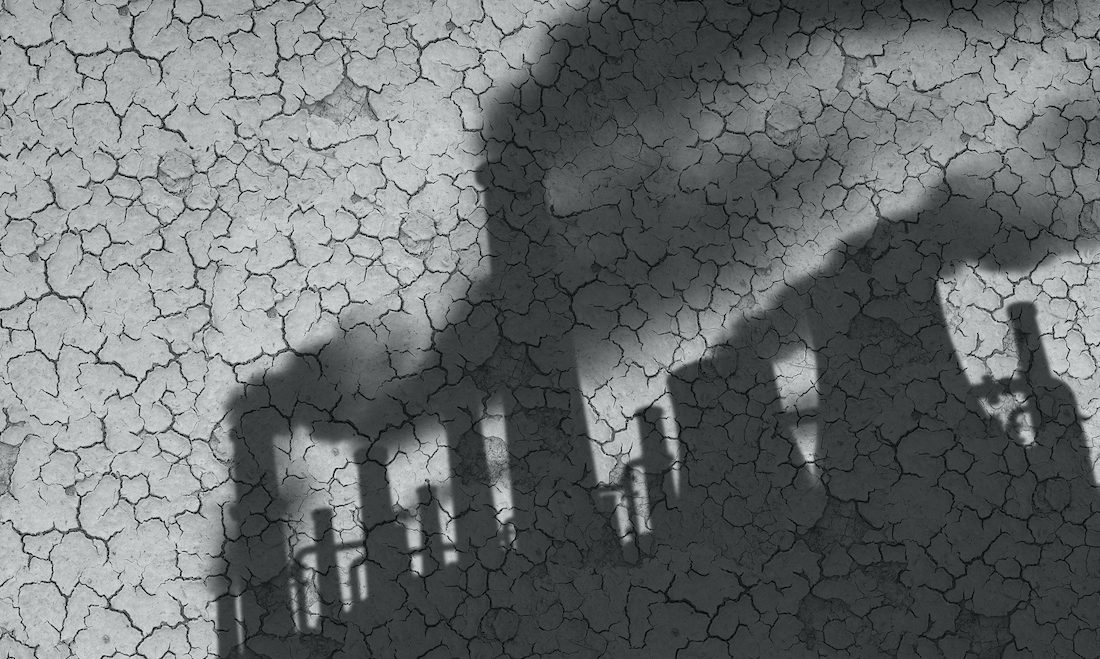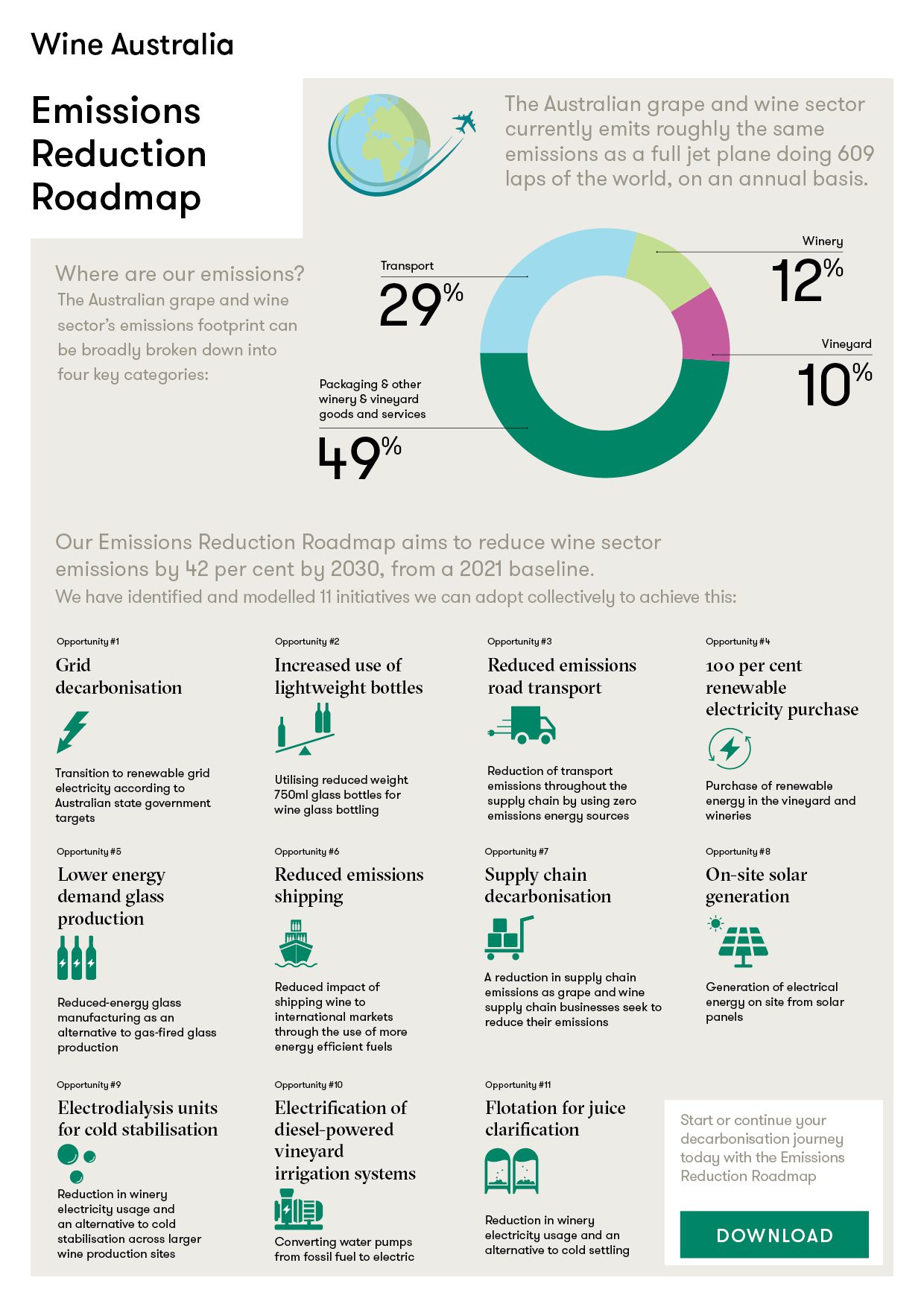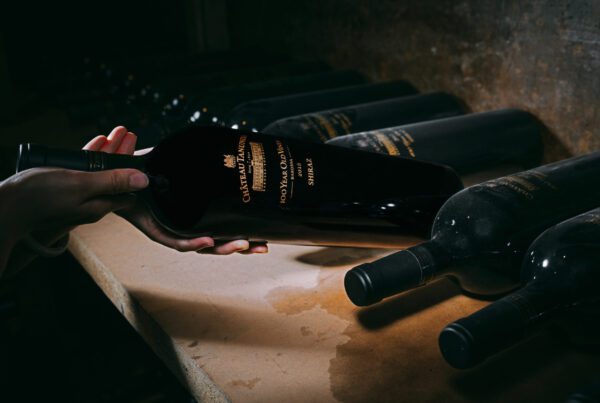
A newly released Emissions Reduction Roadmap (ERR) for the Australian grape and wine sector has outlined effective and practical steps to reduce the sector’s carbon emissions by more than 40 percent before 2030.
Developed by Wine Australia with global sustainability advisory Edge Impact in consultation with more than 200 members of the grape and wine community, the ERR provides an industry-endorsed and science-backed pathway to reducing carbon emissions across the sector.
Wine Australia Senior Research and Innovation Program Manager Dr Sharon Harvey says the Emissions Reduction Roadmap is a key starting point for Australia’s grape and wine businesses to decarbonise and reflects the commitment to ongoing improvement and safeguarding the future for Australian wine.
“Wine regions around the world are facing production challenges as a result of climate change, and global action towards a lower carbon future is accelerating,” Dr Harvey says.
“We all need to consider the emissions cost of our products to reduce our impact on the climate and to ensure access to key markets in the future.
“Backed by science, our Roadmap identifies the current footprint of the Australian grape and wine sector, the key areas where emissions reduction can be achieved, and it provides practical steps for growers, winemakers, and other members of the value chain to start or further reduce emissions from today.
“With the initiatives modelled in the Roadmap, we can have confidence that there is a 42 percent reduction opportunity that can be achieved by 2030.
“However, we will also review the roadmap at intervals leading up to 2030, and beyond, to see how we are tracking and to ensure that we take advantage of new innovations to support the sector’s goal of net zero emissions.”
Wine Australia says he Australian grape and wine sector currently emits roughly the same emissions as a full jet plane doing 609 laps of the world, on an annual basis.
The sector’s emissions footprint can be broadly broken down into four key categories: Transport (29 percent), Winery (12 percent), Packaging and other winery and vineyard goods and services (49 percent) and vineyard (10 percent).
The Emissions Reduction Roadmap outlines 11 initiatives that lead to cost savings and the reduction of emissions in the vineyard, in the winery and through the supply chain.
Achieving the full potential of the reduction opportunity available to the sector will require focus on using data to inform business decisions, reducing – and eventually eliminating – the use of fossil fuel vehicles, operating efficient production sites powered by renewable electricity, optimising low emissions transport and distribution networks, and collaborating with the wine supply chain to reduce emissions from high emitting materials and services.
Tahbilk Winery in Central Victoria has invested in emissions reduction activities for more than 20 years.
Tahbilk Environment & Vineyard Research Analyst Lachie Thomas, who participated in the development of the Roadmap, says the outcomes of the Roadmap help identify a clear pathway to continue the winery’s work and is excited to see a clear pathway laid out for the sector.
“With the sector rapidly embracing change towards a low emissions future, resources such as the Roadmap provide important information to wine businesses that supports them to adapt and embrace this future,” Mr Thomas says.
“There is keen interest from across the sector into how businesses can become involved in emissions reduction projects. This Roadmap helps provide clear guidance and direction to companies so that they can understand the opportunities they can implement to meet the strong emissions reduction targets of 2030.
“Decarbonising the Australian grape and wine sector provides an opportunity to unite the industry. The emissions reduction activities outlined in the Roadmap aim to strengthen businesses while enabling the sector to become a global leader in sustainable production. This is a position that will support the entire sector to thrive with greater market access, resilience to adverse challenges, and positive outcomes for our people and planet.”
The ERR is accompanied by the Emissions Reduction Guide, a reference manual that grapegrowers and winemakers can use to take action in their own businesses.
Dr Harvey says collaboration across the entire production and supply chain is key to achieving the emissions reduction goals.
“I encourage everyone in the industry from around Australia to look at the Roadmap’s resources and sign up to the network, so we can work together as a community to share knowledge, resources and best practices,” she says.
“By doing so, we can drive real change and ensure the long-term success of our sector.”
The Emissions Reduction Roadmap forms part of Wine Australia’s Environment, Social and Governance (ESG) Investment Plan for the wine sector, a strategy that identifies the areas that need to be prioritised to future-proof the sector to meet customer needs and business demands.
Australian Grape & Wine has joined Wine Australia in its commitment to support the sector and supply chain so that the Roadmap’s targets can be achieved.
Related content














Who were the 200 members of the Grape and Wine community that were consulted?